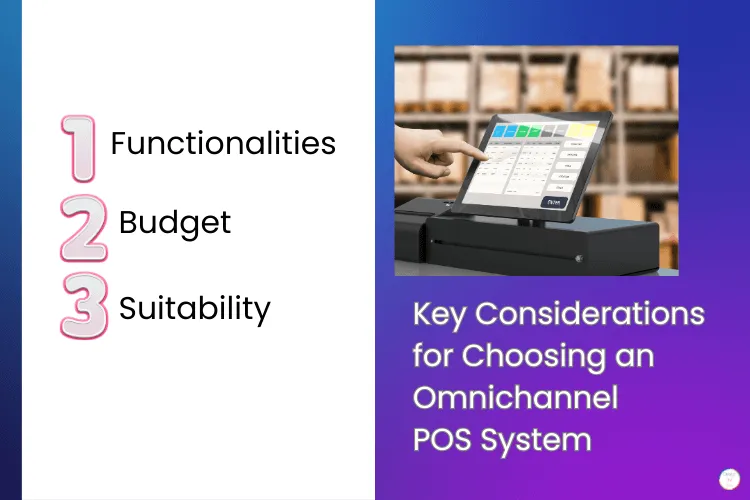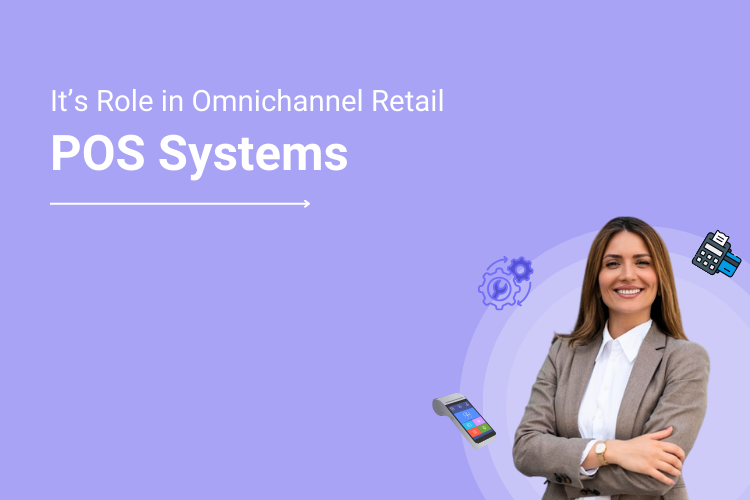According to the Shopify Commerce Trends Report 2023, 82% of businesses surveyed were confident that physical stores will keep playing an important role in their eCommerce growth. As consumers demand a cohesive buying experience through both online and offline channels retailers have to keep delivering the best effort.
In order to deliver an exceptional in-store experience that matches the ever-changing online experience your customers are getting, an omnichannel POS system is essential.
This blog post will be the guide you need to take a look into the future of retail, where the gap between online and offline sales is blurred to non-existence, thanks a lot to the technology that a POS system provides.
Table of Contents
What is a POS System for Omnichannel Retail?
An omnichannel POS in retail is often software used by businesses to handle both in-store and online sales. Through the POS interface, eCommerce store owners can enter sales records and access information about all the products they sell.
POS in omnichannel retail differentiates itself from the traditional cashier by the ability to synchronize and process orders across all sales channels. This means a company can effectively connect everything to a unified central system, including sales, inventory, customer data, loyalty programs, reports, and more.
Take Your Offline Printing Business Online
Expand your offline printing business by establishing a powerful online presence. Reach more customers, streamline operations, and grow your business with ease.
Why is Omnichannel POS the Future Of Retail?
Today’s shoppers can shop anywhere, anytime, and demand an enjoyable experience in whichever place they are buying from. The buyer can walk away from your store even before seeing it by looking at the online information.
The future of retail lies in the hands of handling this “phygital” experience by understanding the importance of convenience, efficiency, and personalization on every channel.
Omnichannel POS in retail businesses is the ideal solution for the integration of in-store sales and online sales channels. The POS’s centralized database helps streamline the process of managing products, customers, pricing, and orders. Through an accelerated checkout process, you can also target a wider audience and improve the growth rate of different business aspects.
When the customers demand more in the future, you will be able to handle and even anticipate the needs of buyers by implementing the right omnichannel POS.
The Role of Omnichannel POS for Retail Businesses with Online and Offline Sales
An omnichannel approach is all about maximizing product sales while improving customer satisfaction. Here is what the omnichannel POS has to offer for a retail business:

1. Centralizing Management for Operation Data
An omnichannel POS software helps you handle every operation detail from checkout, sales, and customer service, to inventory management. When you use a customizable POS, the back-end system can connect with a customer-centric interface to sync product information from all touchpoints.
Moreover, you can interact with customers whenever and wherever they reach out, and quickly build enough data to understand the customer journeys. These insights are the gold mine in increasing sales through making better decisions regarding data analysis. To do so, retailers often integrated their POS with accounting software, ERP, CRM, etc to streamline real time data and manage all operations in a single place.
2. Increase Sales for All Channels
Unlike the POS in a traditional brick-and-mortar store, omnichannel POS solutions provide much more than just simply processing orders. Sales opportunities now can be explored at new online marketplaces, apps, websites, social media, and more.
Your customers will have the liberty to buy from the medium they feel comfortable with and then check out at the place they want. And your brand will have more to offer with more brand visibility, meaning higher chances of impacting the customers’ buying decisions.
3. Reduce Operational Costs
By streamlining the business process, an omnichannel POS system helps reduce your business’ overhead costs. The first major cost cut will be the labor cost. As you free sales channels’ resources through automated POS software, you can optimize the budget for hiring or training.
Unlike traditional point-of-sale systems with costly devices, omnichannel POS can work on any existing device as an accessible app. For example, Shopify POS can cost as little as $50/month to install on tablets and PCs, and you are ready to accept payment anywhere.
Stay Ahead of The Competition
Maximize efficiency in your print shop with DesignNBuy’s Print MIS software!
Simplify job management, optimize resources, and stay ahead of the competition.
4. Provide Personalized Experiences for All Customers
With real-time data analytics, you can hook your customers in for a long time with personalized experiences. Online shoppers get the convenience of browsing and buying 24/7, while offline shoppers can get hands-on experiences with the items they eyed for on online touchpoints.
Acting as a bridge between in-store and online channels, omnichannel POS is the solution to create a phenomenal customer experience. As 24% of consumers want to interact with products before purchasing, you can see how omnichannel POS for retail creates a difference.
5. Increase the Customer’s Loyalty
When a customer enjoys shopping with your brand, the chance of retaining them increases a lot. If you exceed their expectations with personalized suggestions and real-time support, they can even become loyal customers.
A retail omnichannel POS solution helps create the kind of experience that convinces customers to return for more purchases. Online and offline loyalty programs can be applied on any channel, letting customers enjoy a truly omni-channel shopping time.

Experience AI-Powerd design tools, real-time 3D previews, high-resolution print-ready files, a job order dashboard, and automatic price estimation for any size and shape with web to print technology.
How to Choose the Right Omnichannel Retail POS System?
For eCommerce retailers selling through online and offline channels, a POS system is the ideal solution. However, there are some aspects of an omnichannel POS that you should consider.

Functionalities: You should have a list of functions that you want to solve your business’ pain points. Some features may be must-haves, while others should need more time to optimize the budget.
Budget: What is the price you are willing to pay for an omnichannel POS? Consider the cost-to-benefit ratio and take a futuristic approach to anticipate your business’ POS needs in the long term.
Suitability: 3 options for omnichannel POS software are on-premises POS, cloud-based POS, and hybrid POS. Each solution comes with different costs and benefits that you should examine closely before deciding.
Get started with Web to Print Platform
Integrating our web to print software into your print workflow and Experience zero design hassles with print-ready files directly to your back-office.
Wrapping Up
In the digital age, omnichannel POS has proven as a significant success driver for retail businesses. With the power of deeper insights into customer journeys, you can make better decisions while optimizing cost and time.
If you need inspiration, Mr Pet from Canada is a fantastic example. The store is now able to handle more than 1000 orders per day and offer online reward programs for customers to try out more than 25,000 products.
To stay ahead of the competitors, learn from others and try leveraging the power of a POS system for your omnichannel store today.
Get More Print Orders with
#1 Personalization Software
Customers can place orders online, which are seamlessly integrated into your print workflow, reducing manual errors and saving time.




